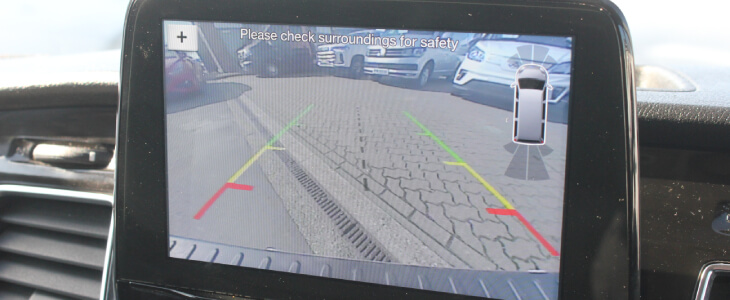Have you ever cringed at the sound of a car bumper meeting an unseen obstacle while reversing? It’s a familiar mishap for many drivers. In a world where technology increasingly intersects with daily life, backup cameras have emerged as a popular tool aimed at preventing these accidents. But how effective are they? This blog delves into the reality behind these devices, exploring their impact on reducing backup accidents.
The Rise of Backup Cameras
Backup cameras have rapidly become a standard in modern vehicles, revolutionizing the way we reverse our cars. This technology, involving a camera mounted at the rear of the vehicle that displays a live feed to the driver, aims to eliminate the blind spot directly behind the car. Initially introduced in high-end models, these cameras are now ubiquitous, thanks in part to legislation. In the United States, for instance, a federal regulation effective May 2018 mandates that all new passenger cars, trucks, vans, and other vehicles weighing less than 10,000 pounds must be equipped with rear visibility technology. This shift underscores a broader commitment to vehicle safety and marks a significant step in the evolution of automotive design.
Statistics: Do They Reduce Accidents?
When it comes to assessing the impact of backup cameras on reducing accidents, the statistics speak volumes. A report in 2017 by the Insurance Institute for Highway Safety (IIHS) indicates that backup cameras reduced backover accidents overall by about 17%. Additionally, vehicles equipped with rearview cameras combined with automatic braking had a 78% lower rate of backup-related accidents compared to vehicles without this technology. Notably, these cameras are most effective in preventing accidents involving small children and objects low to the ground, which are typically out of sight for drivers. This data highlights the tangible benefits of backup cameras in enhancing vehicle safety and reducing the incidence of tragic accidents during reversing maneuvers.
Limitations and Challenges
Despite their benefits, backup cameras are not without limitations and challenges. One significant issue is overreliance; drivers may become too dependent on the camera, neglecting traditional safety checks like mirror use and shoulder glances. This overconfidence can lead to accidents, significantly if the camera’s view is obstructed or distorted by environmental factors like rain, fog, or dirt. Additionally, the camera’s angle may not capture all hazards, particularly those immediately outside its field of view. These blind spots can be critical, particularly in crowded environments like parking lots. Therefore, while backup cameras are a valuable tool for enhancing safety, they should be complemented with vigilant driving practices to ensure comprehensive awareness and accident prevention.
Best Practices for Safe Reversing
Safe reversing involves more than just relying on technology; it requires a blend of vigilance and traditional driving practices. Even with a backup camera, it’s crucial to maintain a 360-degree awareness. Always start by checking your rearview and side mirrors for any immediate obstacles. Physically turning your head to glance over your shoulder provides another layer of awareness, ensuring you catch what cameras might miss. Additionally, reverse slowly and steadily, allowing time to react if something enters your path unexpectedly. These practices, combined with the use of backup cameras, significantly enhance safety during reversing maneuvers.
Legal Perspective: Accidents Despite Cameras
From a legal perspective, accidents involving vehicles with backup cameras can present unique challenges. Even with this technology, drivers are still responsible for ensuring safe reversing. If an accident occurs, the presence of a backup camera doesn’t automatically absolve a driver from liability. Instead, it’s important to examine whether the driver exercised reasonable care, which includes properly using the camera along with other safety checks. In cases where backup camera failure or malfunction contributes to an accident, product liability may come into play. As personal injury attorneys, we carefully evaluate these factors, advocating for our clients’ rights and ensuring that all aspects of the incident, including technological elements, are thoroughly considered in seeking justice and compensation.
We Can Help If You’ve Been Involved in a Backup Accident
At Chatham Gilder Howell Pittman, we understand the complexities of accidents involving modern vehicle technologies like backup cameras. Our experienced team is committed to providing comprehensive legal support, ensuring your rights are protected. If you’ve been involved in such an accident, don’t hesitate to contact us for personalized, experienced guidance.

